What is sorghum and how is it used in different areas of life?
Sorghum is one of the most common grain crops. It is actively cultivated due to its wide range of uses and high content of useful substances. In Russia, sorghum is not yet grown as actively as in other countries, but its popularity is steadily growing. From the article you will learn what kind of crop this is, what the plant looks like, how it is useful, and what is done with sorghum grain on an industrial scale and at home.
What is sorghum
Sorghum was first cultivated in the 4th century BC in East Africa. Later the culture spread to the countries of Asia, Europe and America.
The plant has gained worldwide popularity due to its high resistance to hot and dry climates. Sorghum remains one of the most valuable food products and the main source of food for the inhabitants of the African continent. This annual is one of the five most popular crops in the world.
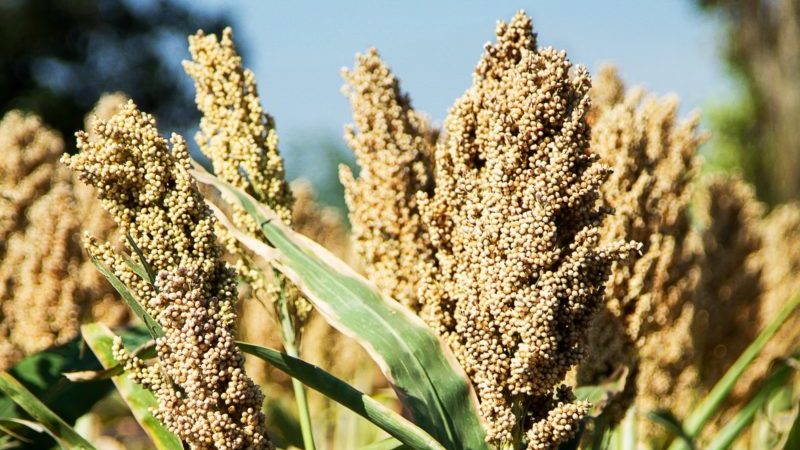
Botanical description
Sorghum is a heat-loving, unpretentious plant. It tolerates drought well and can grow even in salty soils.
Reference! Sorghum is a spring crop. It is used in the food industry, for technical purposes and for the production of animal feed.
The crop has high yields and minimal care requirements. For a stable growing season, a temperature of +25°C is sufficient, but even at low temperatures, constant growth is observed, although slower.
The plant grows on most known types of soil, which allows grow in almost all countries of the world. Sorghum has strong immunity, is resistant to the most dangerous and common diseases of cereal crops, and tolerates dry weather well.
Places of growth
In Africa, sorghum is known as Sudan grass - the plant was first cultivated in the territory of modern Sudan and Ethiopia. Later, cereal cultivation began in other countries in the northeastern part of the continent.
Today this crop forms the basis of agriculture in these countries. Sorghum began to be grown in Europe in the 15th century, and two centuries later the plant was introduced to America. Now the culture is widespread in the following regions: southern Europe, South and North America, South-West and Central Asia, Equatorial Africa, Australia, Ukraine and Moldova.
Appearance
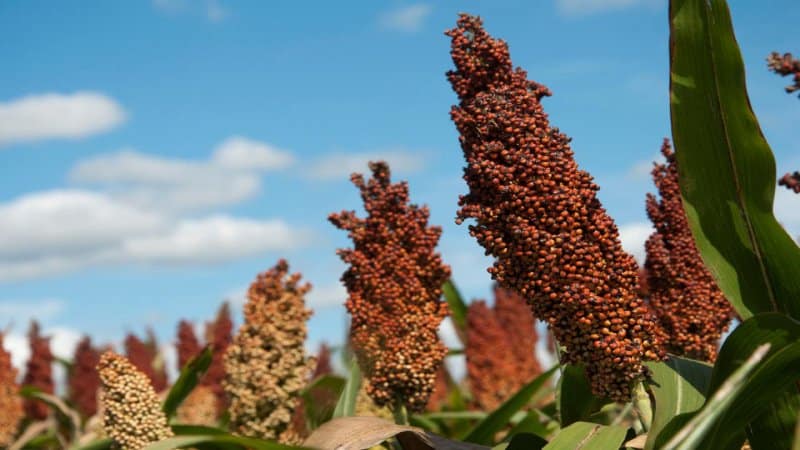
Sudan grass belongs to the genus of herbaceous plants of the Poa family, among which annual and perennial varieties can be found.
Features of the plant:
- It has a developed root system, which accumulates maximum moisture during the period of active growth.
- A cereal crop can enter a state of suspended animation when there is a lack of moisture or the temperature rises to a critical level.
- During the period of suspended animation, sorghum stops growing for several months until weather conditions improve.
Externally, the crop resembles a long shoot of corn with wide, succulent leaves. At the end of this shoot a panicle with seeds ripens. Its length is 15-35 cm, depending on growing conditions.
Characteristics
Sorghum is considered a valuable agricultural crop not only because of its unpretentiousness and high yield.This cereal has high nutritional value - it contains B vitamins, microelements (selenium, iron and zinc), tannins and macroelements (calcium, phosphorus and magnesium).
100 g of cereal contains 68% carbohydrates, up to 15% crude protein, 3.3% fat. It is also worth mentioning the caloric content of sorghum: 100 g of product accounts for 339 kcal.
Kinds
There are several varieties of sorghum. Each of them has found application in a certain area, although in terms of botanical characteristics and appearance they differ little from each other.
Cereal
They are grown to produce grain, which is used as a basis for making feed mixtures for animals.
Reference! This culture is considered one of the most ancient, as it was used as feed even before our era.
Recently, grain sorghum has also been in demand among people on a diet. This cereal is recommended to replace all wheat cereals. Unlike wheat and other grains, sorghum is low in gluten and high in fiber, so it is recommended for diabetics and people with gluten intolerance.
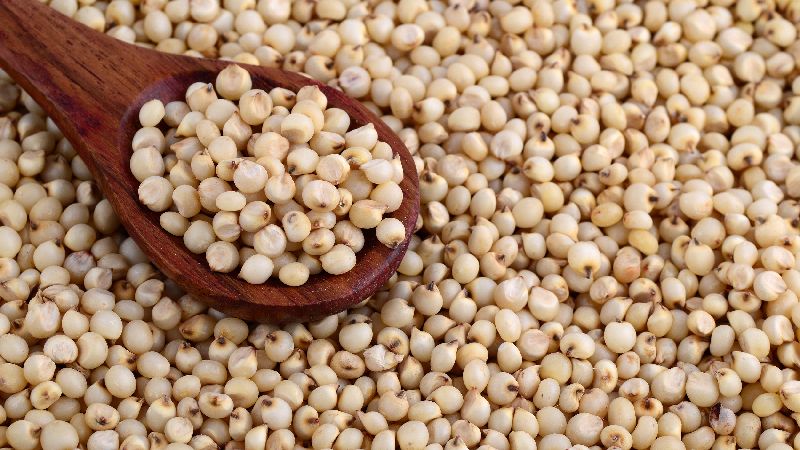
Sugar
The crop got its name due to the high sugar content in the stems. Sweet sorghum is used to make sweets and as a component of alcoholic beverages. The upper parts of the shoots are used for feeding animals.
Sweet sorghum has a high yield. It is used to produce molasses, and sugar obtained from this type of cereal has a lower cost than cane or beet sugar.
This culture is considered waste-free:
- The shoots remaining after the first processing to obtain molasses and sugar are used as animal feed.
- Dry stems and roots are used instead of solid fuel.
- Planting sorghum has a positive effect on the condition of the soil. The plant enriches the soil and draws out excess salts from it.
In addition, sweet sorghum is immune to most diseases, so practically no pesticides are used when growing it.
grassy
The main use of grass sorghum is in animal feeding. This plant has succulent leaves and shoots high in vitamins. Grains are also used to feed livestock. However, before issuing, they must be soaked and crushed, since each grain is enclosed in a hard shell.
When using grains and stems as feed for livestock, keep in mind that its share in the total diet should not exceed 35%. This is due to the high content of tannins, which can impair the digestibility of other foods.
Technical
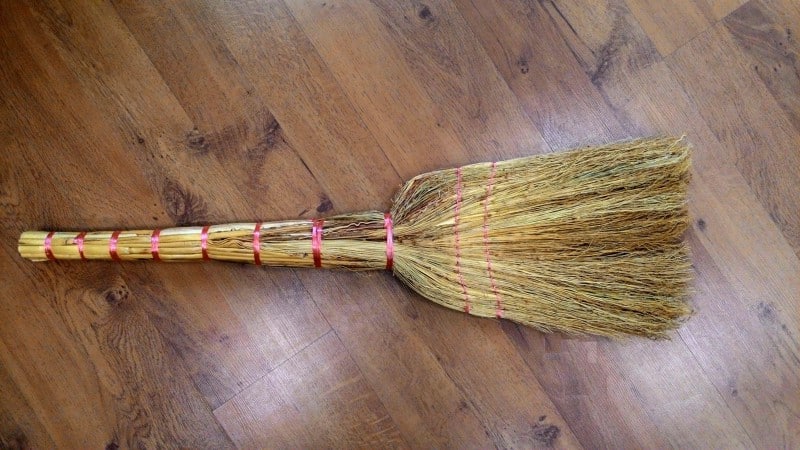
Industrial sorghum is also called broom sorghum because it is grown for the production of brooms.
The technical variety of culture has its own characteristics:
- The plant is extremely unpretentious and grows successfully even on poor soils and in arid climates.
- Seeds obtained from panicles are used as poultry feed.
- Panicles and dried shoots are used not only for the production of brooms, but also as bedding and mulch.
Compound
Sorghum, in particular grain, is used not only in the agricultural sector, but also in the food industry. The popularity of the crop among adherents of a healthy lifestyle is explained by the rich composition and beneficial properties of the cereal.
KBZHU
Sorghum grain is considered a high-calorie product. 100 g of this cereal contains 339 kcal, the bulk of which are carbohydrates.
The nutritional value of the cereal is as follows (data given per 100 g):
- carbohydrates – 68.3 g;
- proteins – 11.3 g;
- fats – 3.3 g;
- water – 9.2 g;
- ash – 1.57 g.
The high carbohydrate content explains the high nutritional value and energy value of the product. In addition, the grains contain vitamin C, PP, almost the entire group B, folic acid, macro- and microelements.
Benefits and harms
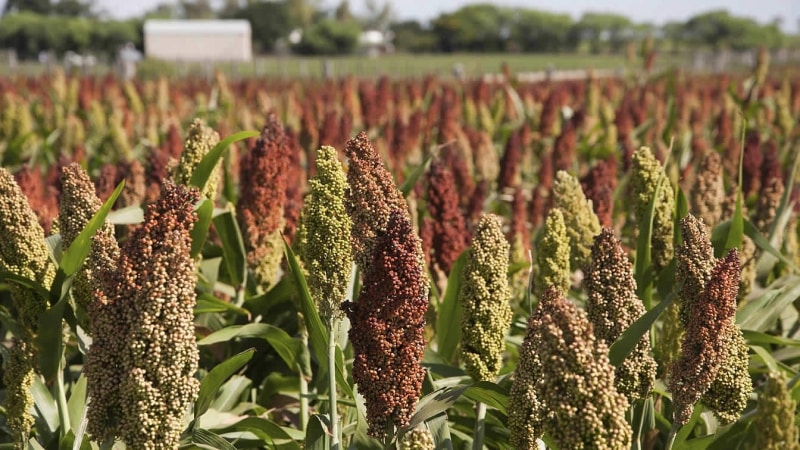
High nutritional value and low gluten content make sorghum one of the healthiest foods available.
It is recommended for use by people with diseases of the digestive system, diabetes and rheumatism. The cereal is also used to prevent heart attack and stroke.
Reference! There is another variety - lemongrass. The components of the grain of this culture have a beneficial effect on the condition of the skin, which is why it is often used in cosmetology.
The high content of folic acid makes the grain useful for pregnant and lactating women, and the absence of gluten allows it to be included in the diet of people with gluten intolerance.
The potential harm of sorghum is explained solely by individual intolerance and is expressed in various digestive disorders. If flatulence, constipation or diarrhea does not go away after a few days, it is better to stop eating cereal.
Medicinal properties
The rich chemical composition and the presence of many useful elements have made sorghum popular in folk medicine in Asian countries.
This cereal has the following healing properties:
- accelerates the breakdown of fats, improves metabolism and appetite;
- accelerates protein synthesis and takes part in the synthesis of glucose, so sorghum is recommended to be included in the diet of diabetics;
- stimulates hemoglobin production;
- removes salts and toxins from the body;
- strengthens the heart muscle and improves brain activity.
How to choose
When choosing sorghum for food, keep in mind that grassy and industrial varieties are not suitable for this purpose - only grain or sugar varieties.
When purchasing cereals, pay attention to the appearance of the grains. They should be completely dry and easy to crumble. The color can range from light yellow to brown and even black.
Advice. Sorghum porridge can have a bitter taste, so soak it overnight before cooking.
Application
The scope of sorghum is not limited to agriculture and industry. This cereal is widely used in cooking, cosmetology and folk medicine in some countries.
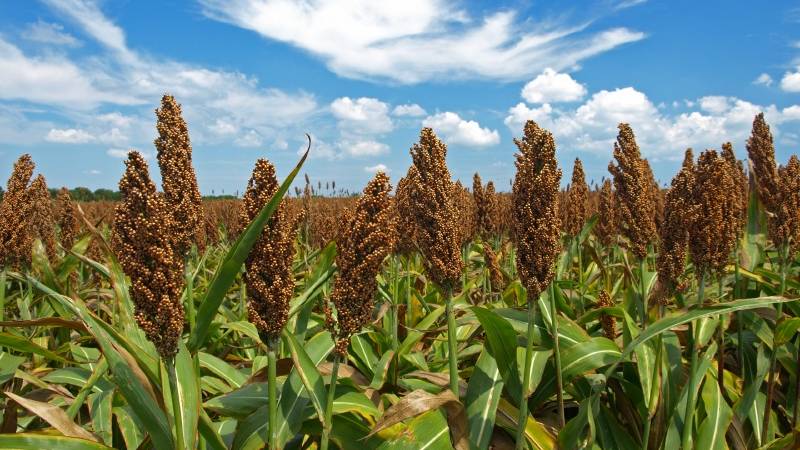
In cooking
In the food industry, sorghum is considered a universal product. After soaking, its taste becomes neutral.
Use in cooking depends on the selected variety of sorghum:
- Lemon has a pleasant citrus aroma, so it is used as a seasoning for meat, fish and vegetable dishes.
- Sugar is used to make sweets and alcoholic beverages (beer, kvass and mead).
- Grains are ground into flour and used to make porridges and soups.
In cosmetology
Sorghum juice and extract are used in cosmetology as an effective anti-aging agent. Cereal-based products form an invisible film on the surface of the skin. It evens out the skin texture, saturates it with useful substances and gives a natural glow.
In folk medicine
The use of sorghum in folk medicine is explained by its rich chemical composition.The high content of vitamins, micro- and macroelements makes this plant an indispensable means of preventing serious diseases of the heart, blood vessels and digestive tract.
To achieve a positive effect, simply include this cereal in your daily diet.
In agriculture
The widest area of application of sorghum is agricultural. Green leaves and shoots are used to feed livestock, and grains are used to feed poultry.
Sorghum can be supplied not only fresh, but also dried. It is also used to make silage.
How to store sorghum
Sorghum grains do not require special storage conditions. It is enough to place them in a dry room at room temperature. Under such conditions, the grains retain their beneficial properties for two years. Cereal flour can be stored for about a year.
Results
Sorghum is not yet the most popular crop in our country, but it is gradually becoming famous due to its versatility, unpretentiousness and benefits. Grain is used in the food industry, agriculture, cosmetology and medicine.